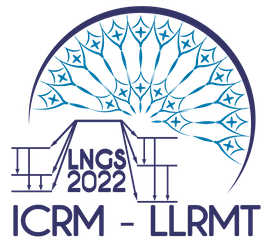Speaker
Description
In rare events physics experiments the background produced by decay of radioactive nuclides in experiment materials could overlap the signals of interest. A big effort is necessary to keep the radioactive contamination under control by selecting the materials used in the construction of the experiment. In this contest it is crucial to develop sophisticated analysis and measurement techniques to achieve the contamination limits of 238U imposed by the experiments.
Neutron activation analysis (NAA) is a good technique for studying trace radioactive contamination of Uranium within the materials. This technique involves exposing the sample to a thermal neutron flux in order to transform the long life nuclide 238U into the radioactive short life 239Np nuclide. The gamma radiations emitted after the beta decay of 239Np are usually measured with an HPGe detector in order to identify the presence of 238U. This technique allows us to achieve sensitivity at the ppt level, but sometimes it is not enough to satisfy the strong demands coming from the requirements.
In order to increase the sensitivity on 238U in liquid samples, a new measurement methodology has been developed. The beta decay of 239Np populates an isomeric state with high probability, the deexcitation of this level can occur in several channels by emission of gammas and internal conversion (IC) electrons in a delayed time ruled by the half-life of the isomeric state. The high probability of IC transition allows to use the emitted electron to obtain a strong marker of this decay by measuring the timing distribution of the delayed events. By measuring in coincidence the beta and IC electrons and the correlated gamma photons with a beta-gamma spectrometer, we obtain a strong reduction of background with a proper time selection. This technique allows us to achieve results with a sensitivity two orders of magnitude better than the standard approach.

